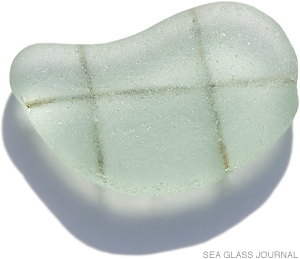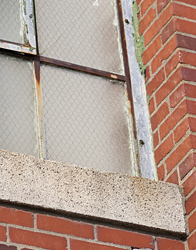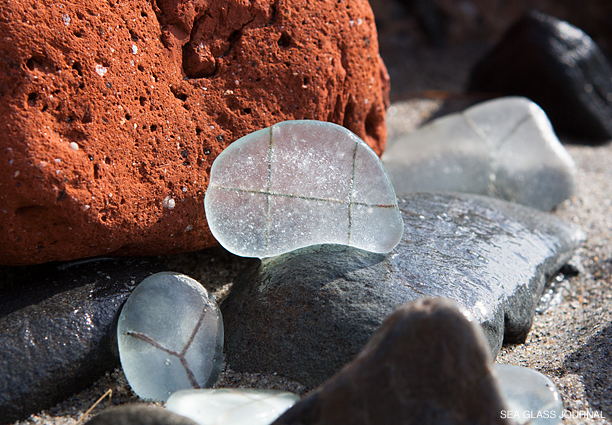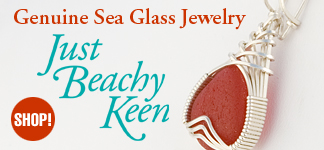The Sea Glass Shard of the Month: February 2016
Safety Wire Mesh Sea Glass

Sea Glass Specifications:
Color: Light Seafoam
Max Length: 35.3 mm (1.39")
Max Width: 25.1 mm (0.99")
Max Thickness: 5.1 mm (0.20")
Weight: 6.3 grams (0.22 oz)
Estimated Age: 40 to 60 years old
This month we feature a sea glass shard that may invoke memories of places and buildings of the past. This glass is referred to in general terms as safety glass but more specifically as wire mesh or chicken wire glass.

A type of industrial building that would have used wire mesh glass..
Facts of Interest
Charles Barnard, an ironmonger in the United Kingdom, built the world's first wire-netting (chicken wire) machine in 1844. He based his design on cloth weaving machines.
In 1892 Frank Shuman (American inventor, engineer and solar energy pioneer) invented wire glass safety glass.
While wire safety glass has been fazed out as a fire-resistant glass it has become popular again for architects and interior designers going for that traditional, nostalgic look within a building.
Wire mesh glass is a specific type of safety glass manufactured primarily as a low-cost fire-resistant glass, with wire mesh inlaid in the glass to prevent it from shattering and breaking out under stress or when exposed to high temperatures.[1] This made wire mesh glass desirable in school gymnasium doors and factory skylights, windows and doors in the past.
 |
...wire mesh (was) inlaid in the glass to prevent it from shattering and breaking out under stress or when exposed to high temperatures. |
 |
Between 2003 and 2006, the International Building Code gradually phased out wired glass as fire-safety compliant. This resulted in old buildings having the wire mesh glass replaced with newer, compliant safety glass.
Wire mesh sea glass is most commonly found in frosted white but can also be found in seafoam and a light aqua blue. It also came in a variety of textures or patterns as they were also designed to provide privacy. (Click privacy glass to see more on that subject.)
Where might you find it
Wire mesh sea glass can often be found along coastline dumps that were the destination for demolished industrial buildings and other sources of discarded wire mesh glass. These dumps can yield a lot of wire mesh sea glass but also include sharp pieces of steel, asbestos and other dangerous artifacts so care must be taken when exploring these areas.
Care must also be taken when handling a newly found shard as the wire embedded within may not have been completely worn down along the edges and could cause injury if mishandled. A well-conditioned shard will usually not have such problems and you will have found yourself a prized sea glass specimen with a lot of industrial history associated with it.
REFERENCES:
1. http://www.homeadvisor.com/article.show.Wire-Glass-Windows-Increase-Fire-Safety.14742.html

Keep up-to-date on all things sea glass... "Like Us" on Facebook... Sea Glass Journal on Facebook






